For many decades, the surgical treatment of varicose veins of the legs remains the only radical method of eliminating this disease and its complications.Thanks to modern technologies and improvement of service techniques, it is really effective in both therapeutic and cosmetic terms, it is possible as easy and painless as possible, well tolerated by patients and does not cause prolonged damage.
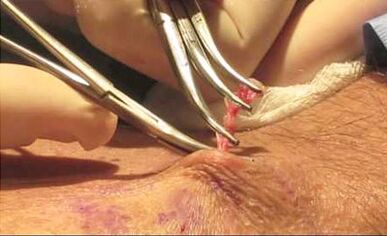
Usually about 30% of the blood from the lower limbs flow through small subcutaneous venous tributaries, which merge into two central venous trunk - large and small subcutaneous veins.These vessels are directly related to deep veins through which 70% of the blood flow.In the places of such compounds, there are valves that pass blood only from superficial veins to deep.There are also dozens of small veins that further connect the surface venous network with a deep.They also have valves that only pass blood in one direction.The main cause of varicose veins is the failure of the venous valves, which leads to incorrect release of the blood: from deep veins to a surface, which increases the pressure in them and leads to enlargement of both small vessels and central venous trunks.The main goals for which surgical treatment is aimed at varicose veins of the lower limbs:
- Eliminating blood stagnation in altered superficial veins of the legs, which will prevent the progression of chronic venous insufficiency and trophic disorders on the skin.
- Removal of deformed vessels and varieties representing a cosmetic defect.
- The elimination of the discharge of blood from deep veins into superficial - ligation and intersection of a perforated (clans) veins, as well as large and small subcutaneous veins in the places of their relationship with deep ones.
- Prevention of repeated appearance of varicose veins.
Separate place in the surgical treatment of female varicose veins of the lower limbs belongs to cosmetic surgery.After such interventions, not only pathologically altered veins, but also postoperative scars on the skin of the feet or they are imperceptible.In order to achieve maximum cosmetic effect, surgical surgery for varicose veins is performed according to the following methods:

- Laser or radio frequency ablation of the burning of veins of the central trunks of a large and small subcutaneous vein under the ultrasound control by drilling the skin of the thigh or foot.
- STEM scleroclite and sclerotherapy - filling large and small subcutaneous veins, as well as all their tributaries, even the smallest, with a special medicine.
With some of the treatment methods described, varicose veins are not removed, but converted from blood vessels into soft cicatric tissue.Both physical influences (laser rays, radio frequency waves) and chemical compounds (sclerosants) destroy the inner layer of the vein.Thanks to this, it loses the lumen, adhesive and completely enhanced by the blood, becoming a simple connective (cicatric) tissue.Thus, without direct removal of the veins, all the targets that are assigned to the rapid treatment of varicose veins of the lower limbs - the changes eliminate the changes in them and eliminate the dangerous consequences of venous insufficiency.The only restriction of cosmetic surgery in the treatment of varicose veins in women is only possible mild or limited varicose veins up to 1-2 degrees.During pregnancy and in the early postpartum period, surgical treatment is contraindicated with the exception of acute situations requiring emergency intervention, such as upward thrombophlebitis.The operation is limited to the dressing of a large subcutaneous vein at the site of its relationship with the femur (the cross).Consider the most common surgical interventions in the treatment of varicose veins of the lower limbs: laser ablation, endoscopic dissection of the veins and phlebectomy.The latter is divided into the following types:
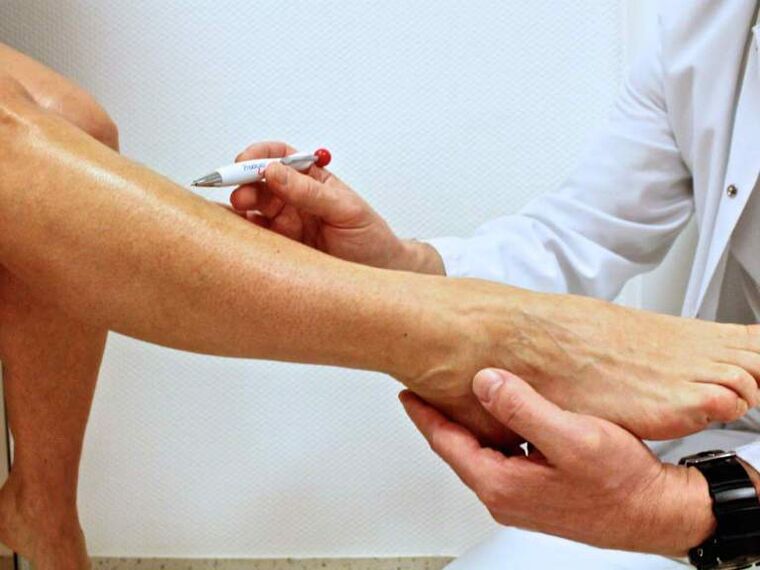
- Classic operation or complete undressing or work of Troyanov-Trendelenburg-Bubo-Narara;
- short undress;
- Flbectomy.
Flbectomy
Removal, extracting veins from the skin is called phlebectomy.This is one of the first methods for surgical treatment of varicose veins of the lower limbs.But even today, phlebectomy is most often performed by phlebology and vascular surgeons.There are three modifications and methods of work: full, short undressing, mini -fushkabectomy.Home surgeons call the classic phlebectomy of the surgery Troyanov-Trendelenburg-Bubo-Narat and foreign authors with full undress.The volume of intervention is presented:
- As a bandage of the trunk of a large subcutaneous vein at the site of its fusion, 2-3 cm on the thigh under the inguinal fold, in the thigh, through a cut.
- Removing it through the step to the foot, using a special probe through two cuts of the skin 1-2 cm along the inner surface near the knee and ankle.
- The removal of all varicose veins and small veins through separate small incisions is about 1-2 cm (they can be from 5-6 to 10–20) with the dressing of insolvent perforative vessels.
- Sewing all wounds with cosmetic stitches.
The classic phlebectomy most radically allows you to remove varicose veins, but the most traumatic of all existing techniques.
Brief
With a short removal, the entire large subcutaneous vein is not removed, but only its fragments affected by varicose veins, for example, only the thigh or lower leg.Healthy segments are not removed.This reduces the injury of the intervention, but the risk of recurrence of the disease remains.Otherwise, surgery surgery is similar to classic phlebectomy.
Flbectomy
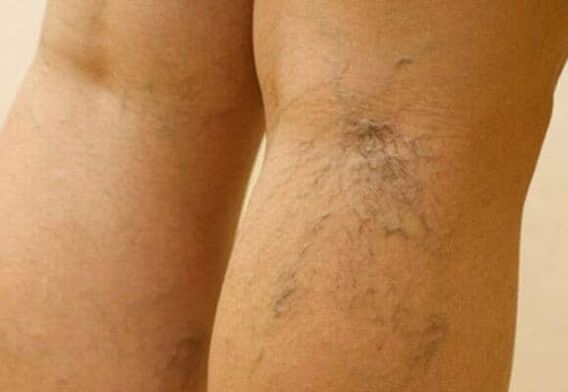
The innovative methodology for the removal of small varicose veins of a large subcutaneous vein is called phlebectomy.Its implementation requires special tools (pointed scalpel, hooks, brackets, spatula), with which the veins are extracted through the skin of the skin several millimeters.It is not necessary to sew such skin defects, the scars are invisible.Most often, surgeons combine a short or complete undressing of a large subcutaneous vein with phlectomy.Such a combined operation combines radicalism and adhesive trauma with good cosmetic effect.Laser ablation for varicose veins involves burning with a laser beam of a large subcutaneous vein beyond its clearance.To do this, by drilling the skin of the thigh or in the ankle area in the lumen of the vein, livestock is introduced to its entire length.Under ultrasound control, Svetovod is slowly extracted.The laser beam acting on the venous wall destroys the inner layer.As a result, Vienna falls and ceases to function, which is clearly visible on the ultrasound monitor.If not only the main venous trunk is influenced by varicose veins, but also its tributaries, they are removed according to the phlebectomy method.
A disease such as varicose veins is a disease characterized by dysfunction of the vascular walls and the weakness of the valves in the veins, which causes stagnation in the blood vessels of the lower limbs and the appearance of venous nodes.Such pathology is quite dangerous and is performed not only with trophic disorders and the presence of an inflammatory process, but also by the lack of tissue nutrition.As a rule, this contributes to the formation of blood clots that can spread through the blood flow throughout the body and the appearance of difficult to live trophic ulcers.In addition, the formation of thrombotic formations inside the vessels threatens the development of such a disease as thrombophlebitis.Therefore, if the patient has varicose veins from the lower limbs, surgical treatment is mandatory, especially if the disease is started.I would like to draw the attention of readers on our site that the surgery for varicose veins of the lower limbs is a radical measure and is generally prescribed if it cannot do without it.Varicose disease of the lower limbs, surgical treatment includes several, most used in the possibilities of surgical treatment.These options are directly in the approach to remove the affected vessels and veins of the lower limbs.
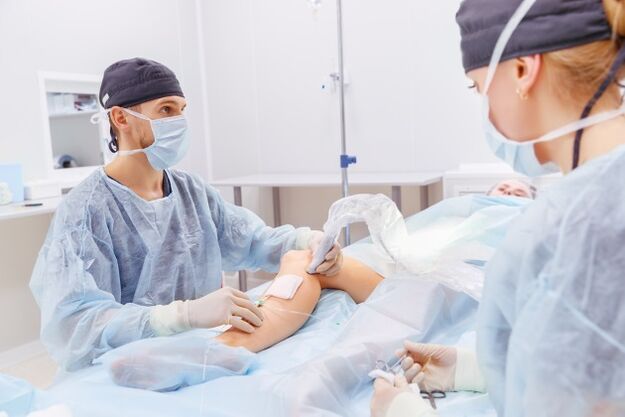
- The use of traditional phlebectomy in surgical practice for radical treatment of varicose veins.This option is carried out in accordance with the Bebbok methodology.This implies the introduction of a probe specifically designed for such a procedure in the lumen of the vessel and the subsequent vein extract through a pre -made skin cut.After the operation, his cable is performed with a cosmetic stitch, then it makes it almost invisible.
- Flbectomy - Such surgery is required to remove small sections of blood vessels and veins affected by varicose veins.Note that this surgery does not provide skin contractions, as part of the affected vessel or vein is removed by drilling on the skin, which does not require seams.
Note that surgical intervention in the treatment of certain diseases is shown away.Nevertheless, varicose veins of the lower limbs, surgical treatment is extremely necessary if the removal of blood clots and potentially dangerous sources of the inflammatory process is necessary.This approach will improve the patient's condition and help to avoid the health and life of the patient's health and life.Countries requiring emergency surgery for varicose veins include:
- The presence of thrombophlebitis or the risks that provoke its appearance;
- acute thrombophlebitis or frequent exacerbations of the disease;
- extensive damage to blood vessels and veins;
- The constantly disturbing feeling of fatigue and heaviness in the legs, unpleasant pain, which shows pronounced varicose veins;
- The appearance of trophic ulcers.
There are also certain contraindications to the varicose vein operation:
- second and third trimesters of pregnancy;
- the presence of acute infectious disorders;
- exacerbation of pathologies existing in a patient (diabetes, asthma, peptic ulcer and others);
- Myocardial infarction, stroke;
- Dermatological problems.
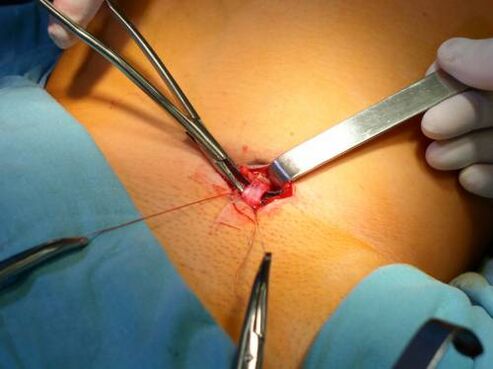
Disruption - As a rule, this method is used in the presence of a small section of the lesion, it is a technique that is more saving, unlike traditional phlebectomy.The method consists in stretching, through a special hook, the most hottest knot.There is also a subspecies of this technique - cryostropicing, which implies the sinking of the damaged vessel to the cryoson and its subsequent removal.
Sclerosis - The technique provides for the introduction of damaged sclerosant, a special substance for "sticking" to the walls of the vessel with each other.Nevertheless, after the procedure, the vein does not extend, but remains in its place without fulfilling its purpose, although the blood flow through Vienna and stops, however, this function is performed by vessels for collateral that does not disrupt the leakage of venous blood.The operation is performed under the mandatory control of a specialist with ultrasound equipment.
Laser coagulation - this method is the most innovative in the treatment of varicose veins and is the introduction of special equipment with laser radiation (a thin probe) into the lumen of the vein.The device has a cauterizing effect on the walls of the blood vessel.
Consequences after surgery to remove varicose veins:
- The appearance of characteristic postoperative hematomas on the surface of the body, which are generally resolved for several months;
- Also, after a few months, the seals under the skin located along the bed of the remote vessel disappear;
- Disorders of the integrity of the lymphatic system (blood vessels) of the blood vessels, which can lead to stagnant processes.Such postoperative effects are treated conservatively, however, often the circulation of the lymph is restored in a few months;
- Possible damage to the subcutaneous nerve endings, which is manifested by impaired sensitivity of the epidermis-this postoperative symptoms passes after 5-6 weeks.
Summation
Varicose surgery
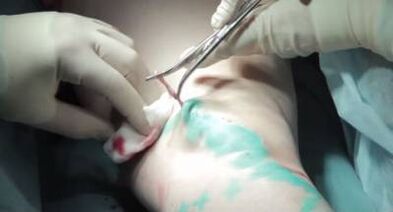
Traditionally, phlebectomy (bloodstream) is performed according to the baby method and consists in the introduction of the probe into the lumen of the vein with the subsequent section of the vein completely above its length through the cutting of the skin from the outside.The incision is sewn at the end of the cosmetic seam surgery.Flbectomy is used to remove very short vein areas, veins are not used during surgery.Skin cutting is not done and a piece of vein is removed by a thin puncture on the skin that does not require the application of seams.With a small area of damage to the varicose veins, it is possible to carry out a more tender technique - undress.This extends with a thin hook from just an extended knot.The experience is carried out with two skin cuts with their subsequent suturing.A variety of this technique is cryostropic - "sinking" the vein to the cryoson, using low temperatures, the destructive knot is also stretched.
Vienna sclerosis is the introduction of sclerosant into its lumen - a substance that "sticks" the walls of the vein to each other, but the vein remains deep under the skin and does not perform its functions.The blood flow through the vein stops and passes through collateral vessels without disturbing the leakage of venous blood from the lower limb.Vienna sclerosis is performed under the control of ultrasound.Laser coagulation of varicose veins is the most new method in phlebology and consists in the introduction of a thin probe into the lumen of the vein with laser radiation, which exerts a cauterizing effect on the walls of the vein.The radio frequency explanation method also refers to more modern treatment of varicose veins, but not all medical institutions are equipped with appropriate equipment.The technique consists in the effect "cauterizing" on the vascular wall of high frequency radio waves.


















